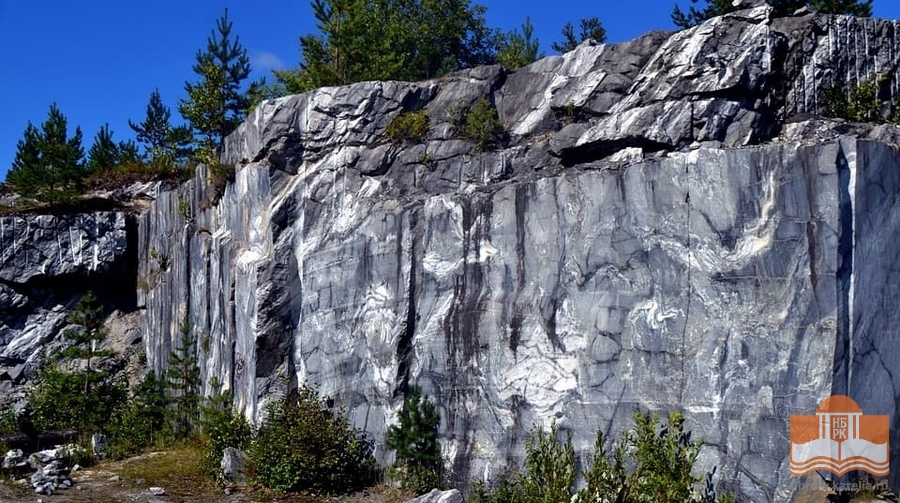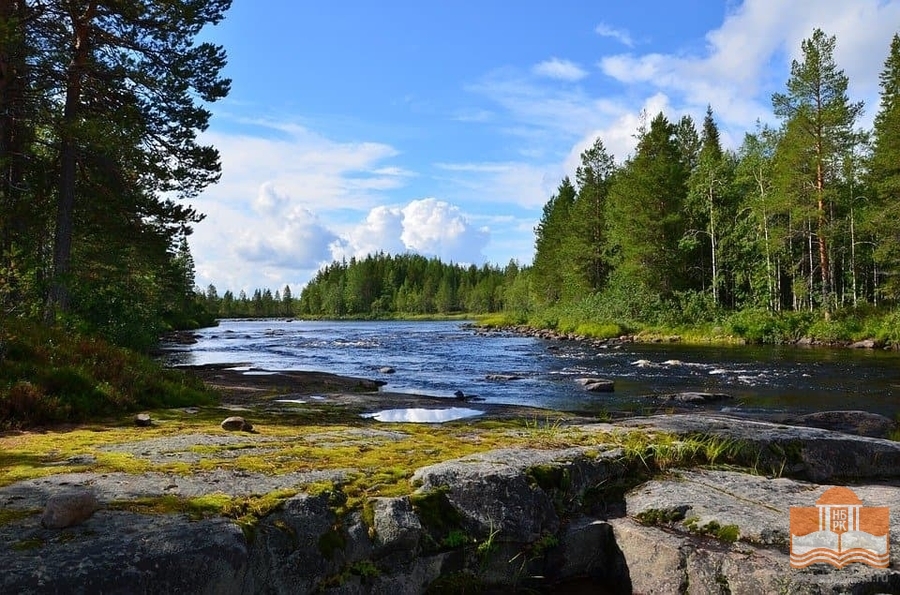The geographical location of Karelia
The Republic of Karelia is situated in the north-west of Russia between the White Sea and the Baltic Sea and is part of the Russian northwestern federal state. Its area of 180,520 km² is 1.06 percent of the total area of Russia.
 The territory of the Republic is 660 km long from north to south. And to the east of the west on the width of the city of Kem, the length is 424 km.
The territory of the Republic is 660 km long from north to south. And to the east of the west on the width of the city of Kem, the length is 424 km.
Karelia has the internal borders with the Murmansk, the Arkhangelsk, the Vologda and the Leningrad regions, and it also restricts Finland. In the northeast, the territory of the Republic extends to the White Sea. The western border of Karelia joins the state border of the Russian Federation and Finland, is 798.3 km long and is also the border of the European Union.
The distance from Petrozavodsk to Moscow is 925 km, to St. Petersburg is 401 km, to Murmansk is 1050 km and to Helsinki is 703 km.
The nature of Karelia is harsh and beautiful at the same time. There are thousands of lakes, many rivers, swirling waterfalls and dark forests. Water bodies cover about 25% of the republic's area, while forests cover 51% of it. The highest point in Karelia is the Peak of Nuorunen - 576 m.
 There are nearly 60,000 large and small lakes and 12,000 rivers in Karjala. The region includes Europe's largest lakes - Ladoga Lake and Onego Lake.Other large lakes include Segozero, Kuyto, Topozero, Pyaozero, Vygozero, Syamozero and Vodlozero. The largest rivers are the Shuya, Suna, and Vodla, which flow into the Onego Lake, and the Kem and Vyg, which flow into the White Sea. The rivers aren't very long, but fast, thorough and full of fish.
There are nearly 60,000 large and small lakes and 12,000 rivers in Karjala. The region includes Europe's largest lakes - Ladoga Lake and Onego Lake.Other large lakes include Segozero, Kuyto, Topozero, Pyaozero, Vygozero, Syamozero and Vodlozero. The largest rivers are the Shuya, Suna, and Vodla, which flow into the Onego Lake, and the Kem and Vyg, which flow into the White Sea. The rivers aren't very long, but fast, thorough and full of fish.
The economy of the Republic of Karelia is based on the processing of local raw materials such as forests and minerals, the tourism potential of the region and the exploitation of the geographical location on the border of the Russian Federation and the EU.
The biggest cities in the Republic are Petrozavodsk, Kondopoga, Segezha, Olonets, Pitkyaranta, Sortavala, Kostomuksha. 81 % of the population of 614,064 people in the area live in urban areas (2020 data).